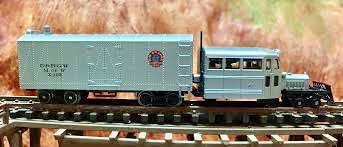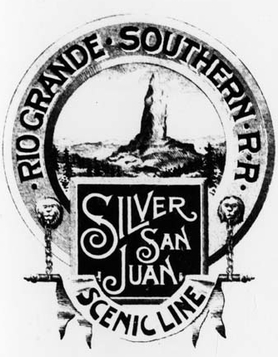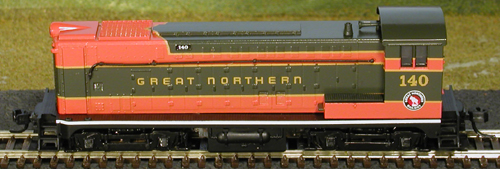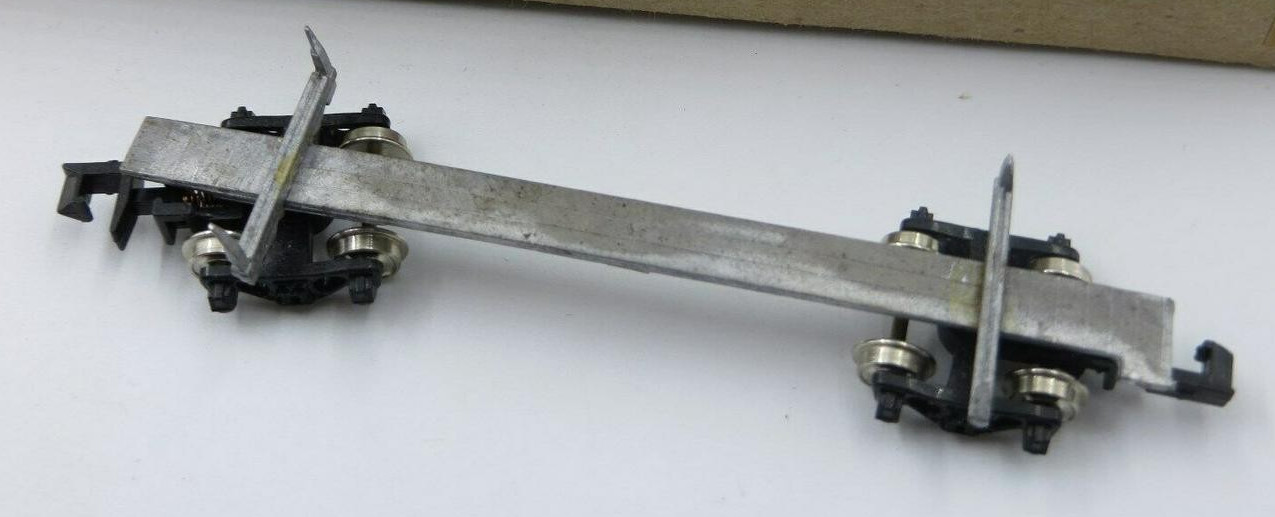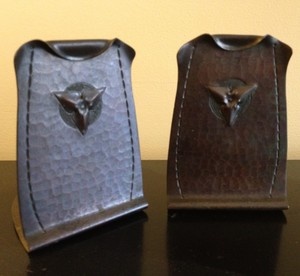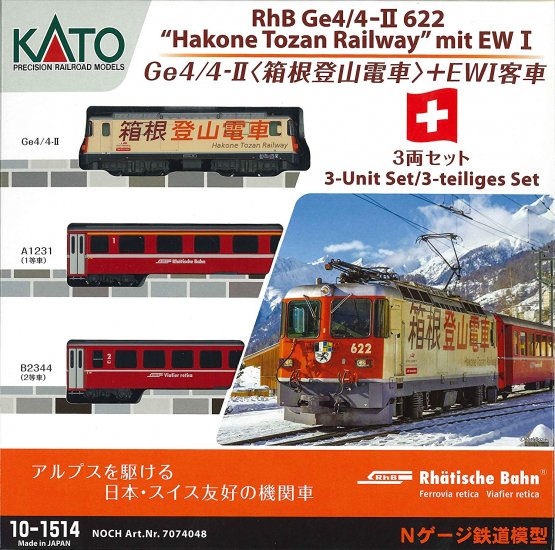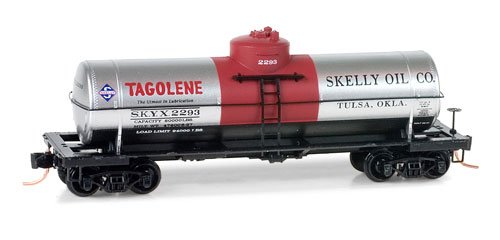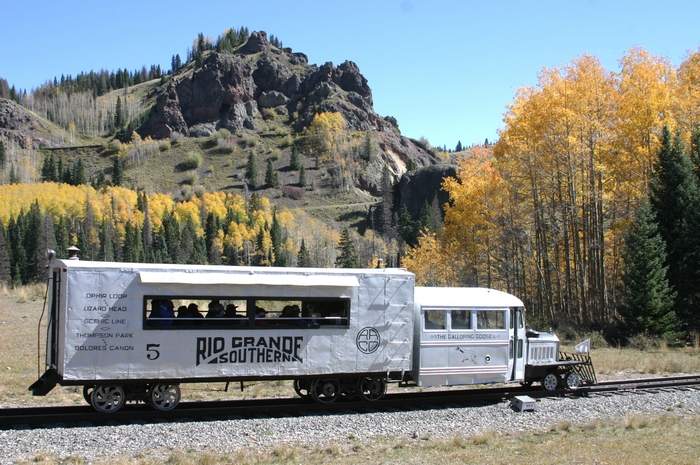Model Information: Introduced in 2006 (DC - $179.98) and 2007 (DCC - $198.98). No other runs since then. Packaged as "The Rail Baron Collection. A Collector's Edition"
Despite being really tiny, this model runs very smoothly.
All eight box trailer wheels provide pickup (no traction tires). Propulsion is provided solely by the two axles on the forward box trailer truck. The cab wheels are electrically neutral.
This is a N gauge model, not a Nn3 narrow gauge like the prototype.
This model is a replica of Rio Grande Southern (RGS) Motor #5 in its original configuration (freight). All other roadnames but RGS are fantasy, as the prototype was only built and used by the RGS. All non RGS versions are marked with road number X-105 and MoW (Maintenance of Way).
Despite being really tiny, this model runs very smoothly.
All eight box trailer wheels provide pickup (no traction tires). Propulsion is provided solely by the two axles on the forward box trailer truck. The cab wheels are electrically neutral.
This is a N gauge model, not a Nn3 narrow gauge like the prototype.
This model is a replica of Rio Grande Southern (RGS) Motor #5 in its original configuration (freight). All other roadnames but RGS are fantasy, as the prototype was only built and used by the RGS. All non RGS versions are marked with road number X-105 and MoW (Maintenance of Way).
DCC Information: First release was DC-only. Second release was with a built-in DCC decoder. Note that both versions are using similar stock numbers (difference is a 0 or a 9 as 2nd character) and can be distinguished by the mention "Standard DC Version" or "Dual Mode DC+DCC Version" on the sticker on the side of the package.
Prototype History: Galloping Goose is the popular name given to a series of seven railcars (officially designated as "motors" by the railroad), built in the 1930s by the Rio Grande Southern Railroad (RGS) and operated until the end of service on the line in the early 1950s.
Motors #1 and #2 were built from a Buick "Master Six" four-door sedan.
Motors #3 and #4 were built from a Pierce-Arrow 1926 body and Pierce-Arrow 33 engine.
Motor #5 was built from a Pierce-Arrow 1928 body and Pierce-Arrow 36 engine.
Motor #6 was built from a Buick body and a Buick-6 engine.
Motor #7 was built from a Pierce-Arrow 1926 body and a Ford 1936 V-8.
All but #1 have been preserved and are visible in various museums in Colorado. All the surviving units have been restored and are operational.
From Wikipedia.
Motors #1 and #2 were built from a Buick "Master Six" four-door sedan.
Motors #3 and #4 were built from a Pierce-Arrow 1926 body and Pierce-Arrow 33 engine.
Motor #5 was built from a Pierce-Arrow 1928 body and Pierce-Arrow 36 engine.
Motor #6 was built from a Buick body and a Buick-6 engine.
Motor #7 was built from a Pierce-Arrow 1926 body and a Ford 1936 V-8.
All but #1 have been preserved and are visible in various museums in Colorado. All the surviving units have been restored and are operational.
From Wikipedia.
Road Name History: The Denver & Rio Grande Western Railroad (reporting mark DRGW), often shortened to Rio Grande, D&RG or D&RGW, formerly the Denver & Rio Grande Railroad, was an American Class I railroad company. The railroad started as a 3 ft (914 mm) narrow gauge line running south from Denver, Colorado in 1870. It served mainly as a transcontinental bridge line between Denver, and Salt Lake City, Utah.
In 1988, the Rio Grande's parent corporation, Rio Grande Industries, purchased Southern Pacific Transportation Company, and as the result of a merger, the larger Southern Pacific Railroad name was chosen for identity. The Rio Grande operated as a separate division of the Southern Pacific, until that company was acquired by the Union Pacific Railroad. Today, most former D&RGW main lines are owned and operated by the Union Pacific while several branch lines are now operated as heritage railways by various companies.
In 1988, the Rio Grande's parent corporation, Rio Grande Industries, purchased Southern Pacific Transportation Company, and as the result of a merger, the larger Southern Pacific Railroad name was chosen for identity. The Rio Grande operated as a separate division of the Southern Pacific, until that company was acquired by the Union Pacific Railroad. Today, most former D&RGW main lines are owned and operated by the Union Pacific while several branch lines are now operated as heritage railways by various companies.
Brand/Importer Information: Con-Cor has been in business since 1962. Many things have changed over time as originally they were a complete manufacturing operation in the USA and at one time had upwards of 45 employees. They not only designed the models,but they also built their own molds, did injection molding, painting, printing and packaging on their models.
Currently, most of their manufacturing has been moved overseas and now they import 90% of their products as totally finished goods, or in finished components. They only do some incidental manufacturing today within the USA.
Important Note: The Con-Cor product numbering can be very confusing. Please see here in the article how to properly enter Con-Cor stock numbers in the TroveStar database.
Currently, most of their manufacturing has been moved overseas and now they import 90% of their products as totally finished goods, or in finished components. They only do some incidental manufacturing today within the USA.
Important Note: The Con-Cor product numbering can be very confusing. Please see here in the article how to properly enter Con-Cor stock numbers in the TroveStar database.
Item created by: Alain LM on 2018-08-16 04:32:48. Last edited by gdm on 2020-07-24 07:29:19
If you see errors or missing data in this entry, please feel free to log in and edit it. Anyone with a Gmail account can log in instantly.
If you see errors or missing data in this entry, please feel free to log in and edit it. Anyone with a Gmail account can log in instantly.


